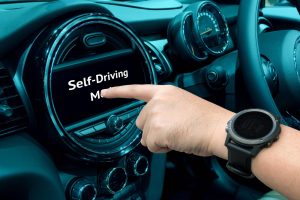Racing drivers have a variety of methods and techniques to enhance their skills and prepare for races. They utilize simulators, both factory and home, to experience the realistic feel of being in a cockpit and practice on different tracks. Limited on-track testing is also crucial for teams to test various parts on their cars. Physical fitness training, karting, and intense competition are all part of the rigorous training that F1 drivers undergo. So buckle up, because we’re about to dive into the world of how racing drivers perfect their craft.
Utilizing Simulators
You can improve your racing skills by utilizing simulators for a realistic cockpit experience and track practice. Simulators offer several benefits for drivers looking to enhance their performance. With advancements in simulator technology, you can now experience race conditions and develop crucial skills without being on the actual track. Simulators provide a safe environment to test different techniques, learn new tracks, and perfect your racecraft. They allow you to simulate various scenarios and make adjustments accordingly. However, it’s important to note that simulators have their limitations. While they provide valuable training opportunities, they cannot fully replicate the physical sensations and G-forces experienced on the real track. Additionally, simulator training should be complemented with on-track testing to ensure a well-rounded development of skills. By incorporating simulators into your training routine, you can gain valuable experience and improve your racing abilities.
Pre-Season Testing Strategies
To prepare for the upcoming season, teams in Formula 1 implement various strategies during pre-season testing. Here are four key strategies they use:
- Driver Performance Analysis: Teams closely analyze their drivers’ performance during testing to identify strengths and weaknesses. This analysis helps them tailor training programs to improve specific areas.
- Data-Driven Training: Teams rely on data collected from sensors on the cars to inform their training regimes. They use this data to create personalized workout plans for each driver, focusing on areas that need improvement.
- Race Simulation Techniques: During pre-season testing, teams simulate race scenarios to help drivers familiarize themselves with different track conditions and practice strategic decision-making. These simulations allow drivers to refine their skills under realistic conditions.
- Driver Feedback Optimization: Teams actively seek feedback from drivers after each testing session. This feedback is crucial in fine-tuning the car’s setup and improving its performance based on the driver’s preferences and comfort level.
Max Verstappen’s Training Methods
Max Verstappen maximizes his training efforts by incorporating a combination of simulator sessions, physical fitness routines, and karting practice. To ensure he is at the top of his game, Verstappen focuses on various aspects of his training.
| Training Methods | Description |
|---|---|
| Psychological Preparation | Verstappen works on mental resilience and focus to handle high-pressure situations during races. He employs techniques such as visualization and meditation to stay calm and focused on the track. |
| Physical Conditioning | Verstappen follows a rigorous fitness routine that includes strength training, cardiovascular exercises, and flexibility workouts. This helps him endure the physical demands of driving at high speeds for extended periods. |
| Racecraft Development | Verstappen hones his racing skills through karting practice. This allows him to work on cornering techniques, overtaking maneuvers, and race strategy development. |
| Reaction Time Training | Verstappen engages in specific drills to improve his reaction times behind the wheel. Quick reflexes are crucial in Formula 1 racing where split-second decisions can make a significant difference in performance. |
| Strategy Analysis | Verstappen studies race data and analyzes past performances to develop effective strategies for each circuit. He pays attention to tire management, fuel consumption, pit stop timing, and other factors that can give him an advantage during races. |
Verstappen’s comprehensive approach to training ensures that he is mentally sharp, physically fit, and skilled in all aspects of racing necessary for success on the Formula 1 circuit.
The Role of the Car in Driver Practice
The car’s design and engineering greatly impact your performance on the Formula 1 circuit. Here’s how it all comes together:
- Car Performance: The engineering behind the car determines its speed, acceleration, and overall handling capabilities. A well-designed car can give you an edge over your competitors.
- Engineering Impact: The engineers analyze aerodynamics to maximize downforce, reduce drag, and improve stability at high speeds. They also optimize tire grip to enhance cornering and braking performance.
- Aerodynamics Analysis: By studying air flow patterns around the car, engineers can make adjustments to improve its efficiency and reduce turbulence.
- Tire Grip Optimization: Engineers work on optimizing tire compounds and tread patterns to ensure maximum grip on different track surfaces and weather conditions.
When the driver-car synergy is achieved through meticulous design and engineering, it creates a winning combination that allows you to push the limits of speed and control on the track.
Skill Level and Training of F1 Drivers
F1 drivers’ skill level and training involve rigorous selection processes, intense competition, and extensive practice. To become an F1 driver, you must go through a demanding selection process that assesses your driving abilities, reflexes, and spatial awareness. Once selected, you enter a world of intense competition where every race is a battle against the best drivers in the world. Extensive practice is crucial to hone your high-speed racing skills and make split-second decisions on the track. Mental resilience plays a vital role in handling the pressure and maintaining focus during races. Physical fitness is essential to endure the physical demands of high speeds, g-forces, and extreme temperatures. Adaptability allows you to quickly adjust to different track layouts and weather conditions. Effective strategizing sets you apart by making strategic decisions for tire wear management, fuel consumption, and pit stop strategies.
Challenges Faced by Racing Drivers
Adapting to different track layouts and weather conditions can be a challenge for racing drivers. As a driver, you need to constantly stay focused and make split-second decisions while navigating the course. The physical demands of high speeds, g-forces, and extreme temperatures add another layer of difficulty to your performance.
To excel in racing, you must also develop effective pit stop strategies. Managing tire wear, fuel consumption, and timing your stops correctly are crucial for maintaining a competitive edge on the track. Additionally, you need to adapt quickly to different track layouts and weather conditions. Each circuit presents its own unique challenges that require adjustments in driving techniques.
Lastly, mistake avoidance is key in racing. One wrong move can cost you valuable time or even lead to accidents. By staying mentally sharp and avoiding errors, you increase your chances of success on the race track. Remembering these challenges will help you prepare for the demanding world of racing and strive for excellence in every race.
Effective Practice Methods for F1 Drivers
Karting serves as a valuable training tool for honing racing techniques and improving racecraft. As an F1 driver, you can benefit from karting in various ways. Firstly, karting allows you to practice and simulate actual races, giving you the opportunity to refine your skills in a competitive environment. Secondly, karting helps with physical conditioning, as it requires strength and endurance to handle the kart’s speed and cornering forces. Additionally, karting enables you to master specific techniques such as braking, throttle control, and overtaking maneuvers. Lastly, karting complements on-track testing by providing additional seat time and allowing you to experiment with different setups or driving styles. So hop into a kart whenever possible to enhance your racing abilities and stay sharp on the track!
Additional Training Tools and Techniques
In the previous subtopic, you learned about the effective practice methods for Formula 1 drivers. Now, let’s explore additional training tools and techniques that racing drivers use to enhance their skills. Here are some key aspects:
- Racecraft techniques: Drivers focus on honing their racecraft skills, such as overtaking maneuvers, defensive driving, and strategic decision-making on the track.
- Physical fitness: Racing at high speeds requires exceptional physical fitness. Drivers undergo rigorous training regimes to improve strength, endurance, and agility.
- Karting training: Karting is a popular training tool among racing drivers. It helps them develop essential racing techniques like car control, precision cornering, and racecraft in a smaller scale setting.
- On-track testing: Testing sessions provide crucial opportunities for drivers to fine-tune their car setups, assess performance levels, and gain valuable track time before races.
- Mental resilience: Racing at elite levels demands strong mental resilience. Drivers work on enhancing focus, concentration, decision-making under pressure, and maintaining a winning mindset.


